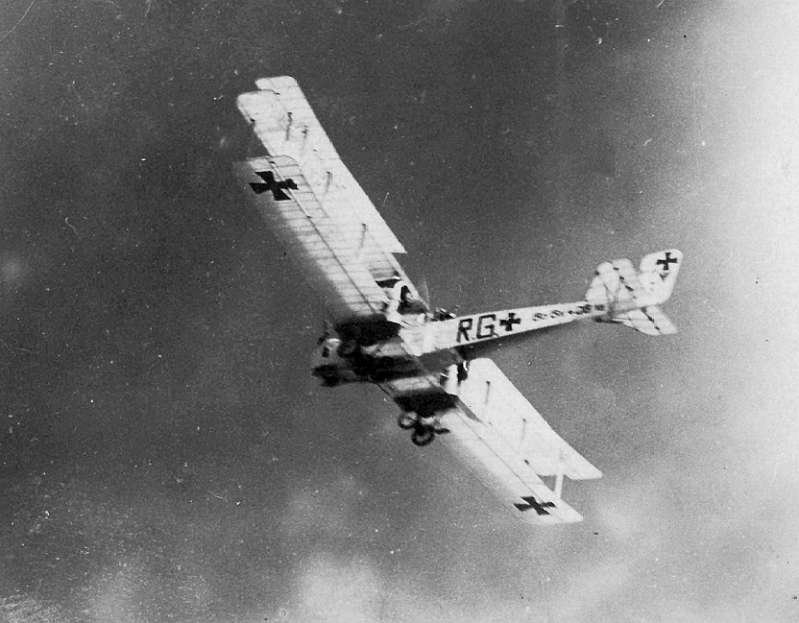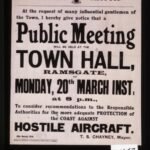
This is a continuation, of sorts, of my series of posts critiquing the recent trend of describing the air raids on Britain in the First World War as the ‘First Blitz’. I’ve separated it out because, although it is about the best-known book to use that phrase in its title – Neil Hanson’s First Blitz (2008) – my concerns aren’t about that usage, but are about the book itself.1 To be clear, I’m not saying this is a bad book; in fact I am broadly in sympathy with his account and I really like some aspects of it (the chapter entitled ‘Londoners unnerved’ is a terrific account of what I call the Gotha shock). But it is a book that should be used carefully. And as I’m seeing it cited fairly widely (including by academic historians, not excluding me!) I think it’s worth putting those concerns out there, particularly since it was not reviewed in any academic publication, as far as I can see.
To my mind, the problems with First Blitz fall into two areas: sources and strategy. Let’s look at the sources first. First Blitz is certainly impressively researched. There are 43 pages of endnotes along with a 25-page bibliography. The latter show that Hanson has drawn on more than a dozen archives in the UK, Germany, and the US. As a monolingual historian myself, I admire that he went to the trouble of getting German-language archival sources translated. There is no doubt that Hanson has read as widely in the relevant primary sources as one could reasonably expect; more so, in fact, given that it is a popular history and not an academic one.
The problem with his sources is twofold. Firstly, as my phrasing above might suggest, Hanson has read much less widely in secondary sources, particularly recent ones. The vast majority of that 25-page bibliography consists of strictly contemporary primary sources (i.e. published prior to the end of the war) or postwar memoirs and histories. Of the balance, there are many from the 1960s and 1970s, but few from after 1990. So what – primary sources trump secondary sources, surely? Well, yes, except that they don’t speak for themselves. You need to understand their context to understand what they say and what they don’t say, and for that you really need to read widely in the secondary literature. In addition, Hanson’s citations here are nearly all to fairly narrowly specialist aviation works, with few on the British home front or the German air services, for example. This undermines the impressive primary source base for First Blitz. You just cannot rely only on the wave of (often axe-grinding) postwar works on the air raids to contextualise what was happening during the war. Hanson shows some awareness of this, but ultimately seems happy to take his primary sources at face value.
The second source problem is more serious: Hanson often doesn’t use his sources fairly or appropriately. Apart from occasional sloppiness or typos, he does nearly always cite his copious quotations correctly in the endnotes. But in the text itself, not only does he rarely mention his sources, let alone discuss their limitations, he freely mixes primary and secondary source quotations without making clear which is which. (I’ll discuss an example in the next post.) Sometimes this is understandable, as when he draws on the vivid series of first-hand accounts of air raid experiences published in the Evening News in 1935 – which were probably more or less true, but were definitely part of Rothermere’s propaganda effort to force the government to start aerial rearmament.2 Less forgivable is his use of Sylvia Pankhurst’s The Home Front (1932), which he quotes extensively in relation to the Gotha raids, especially the anti-German riot in London in July 1917, but also the crowds of well-off sightseers who toured the East End to see the bomb damage and for an account of the auditory sensations of an air raid.3 The trouble is that Pankhurst’s account is nothing to do with the Gothas, as the book essentially concludes with the end of 1916; instead it’s about London’s first Zeppelin raid in May 1915.4 To be fair, Pankhurst doesn’t specify the date either, not does she mention Zeppelins; but as the chapter is entitled ‘The first air raid’ and is sandwiched between chapters on other events in 1915, it’s not hard to work out. In any case, this does not inspire confidence in Hanson’s use of sources I know less well.
As ever, this post is already long enough, so I’ll save my discussion of my strategic concerns for another time.
Image source: Wikipedia.
![]() This work is licensed under a Creative Commons Attribution-NonCommercial-NoDerivatives 4.0 International License.
Permissions beyond the scope of this license may be available at http://airminded.org/copyright/.
This work is licensed under a Creative Commons Attribution-NonCommercial-NoDerivatives 4.0 International License.
Permissions beyond the scope of this license may be available at http://airminded.org/copyright/.
- Neil Hanson, First Blitz: The Secret German Plan to Raze London to the Ground in 1918 (London: Doubleday, 2008). [↩]
- Brett Holman, The Next War in the Air: Britain’s Fear of the Bomber, 1908–1941 (Farnham: Ashgate, 2014), 1–3. See also Brett Holman, ‘The air panic of 1935: British press opinion between disarmament and rearmament’, Journal of Contemporary History 46, no. 2 (2011): 288–307, at 300–301. [↩]
- Hanson, First Blitz, 133–135; also 107–108, 200. [↩]
- E. Sylvia Pankhurst, The Home Front: A Mirror to Life in England during the First World War (London: Cresset Library, 1987), 191–197. [↩]



